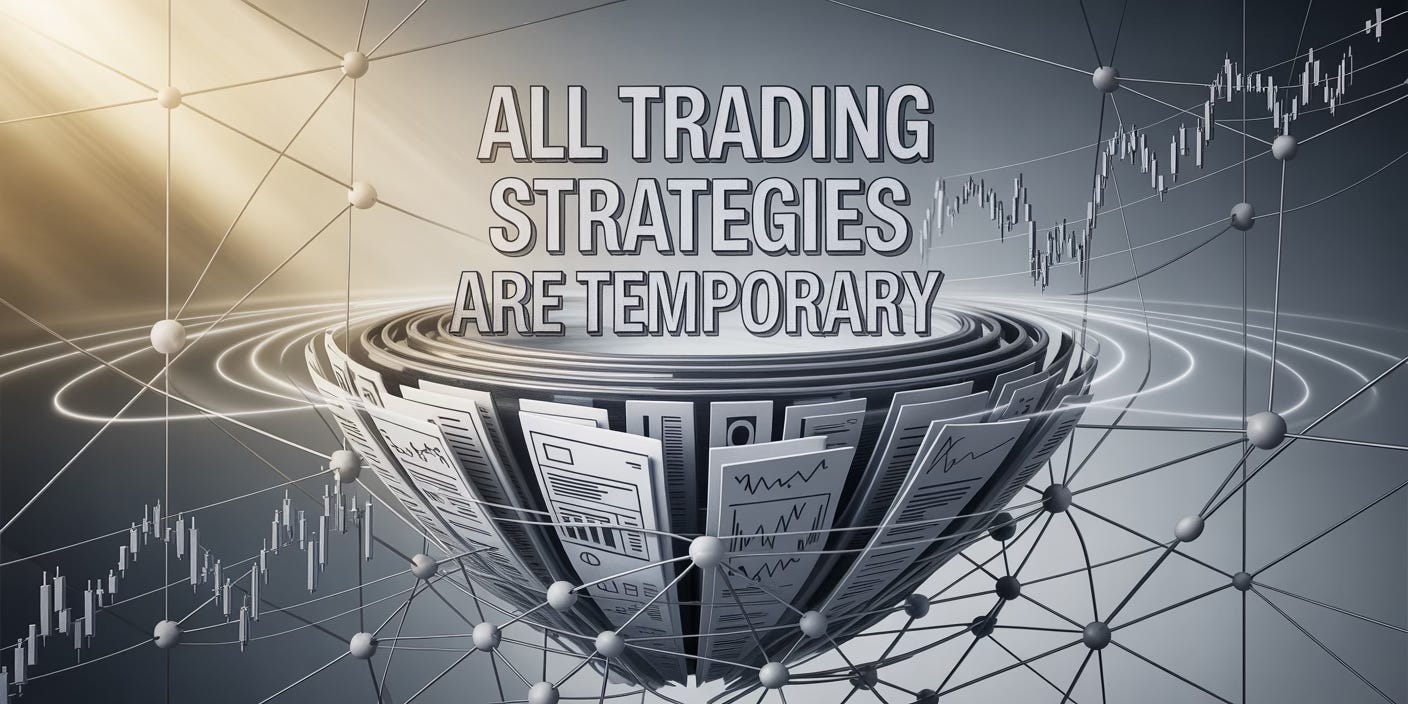Why Every Trading Strategy Works Some of the Time, But Not All of the Time
The Mirage of Permanence
If you’ve traded long enough, you’ve probably noticed almost every strategy “works” for a while, then suddenly stops working.
It’s a feature of how markets evolve. The same market forces that make a strategy profitable also ensure it will eventually stop working.
Markets Are Self-Correcting
The stock market is an ecosystem of competing minds where algorithms, funds, retail traders, and market makers are all trying to exploit the same inefficiencies.
When too many participants notice and exploit a pattern, the pattern disappears.
This self-correcting nature is what makes markets so difficult.
Strategies Stop Working Faster Today
In today’s markets, edges decay faster than ever because information moves instantly and algorithms adapt at high speed. What used to take years to arbitrage away now takes months or even weeks. The half-life of an edge is shrinking, which means adaptability is even more important.
The Role of Randomness
Even a good strategy will experience periods of underperformance purely due to randomness. It may not have stopped working, it could just be randomness at play.
Exception: Human Behavior Keeps Some Strategies Alive
While certain strategies stop working, other strategies endure because they’re rooted in unchanging human psychology. For example:
Greed and FOMO
Panic selling
Momentum then Capitulation
Trading as Evolution
Every profitable strategy is like a living organism. It thrives for a while, adapts, competes, and eventually becomes extinct and replaced by new ones better suited to the current environment.
At CI Volatility, we never assume that any strategy will work forever. We monitor performance across volatility regimes and and cross-asset correlations. When a strategy decays, the signals begin to diverge long before the P&L does. That allows us to rotate, adjust, or retire systems before the rest of the market realizes they are obsolete.


